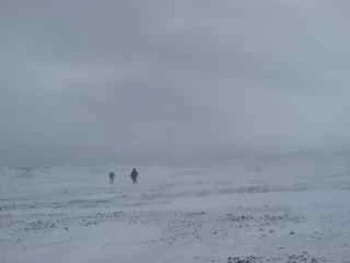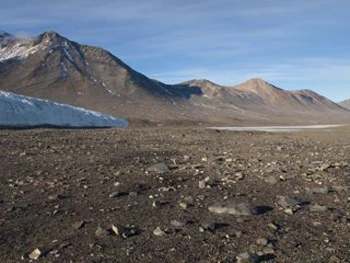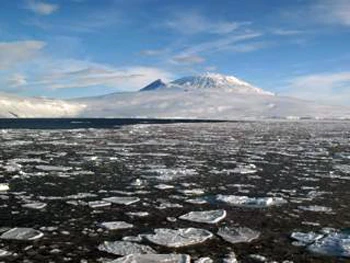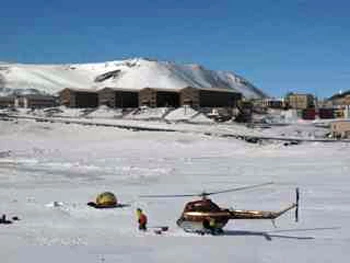Tom Sharpe's Antarctic Diary Thursday 24 November 2011
, 5 Ionawr 2012
Thursday 24 November 2011
This morning we landed by helicopter on the beach at Cape Bird on the northwestern side of Ross Island and hiked north to an Adelie penguin rookery, with perhaps 70,000 pairs of birds.
Much smaller than Emperors, these are feisty little beasts, the most southerly breeding penguin in the world. It’s always entertaining to watch them carrying pebbles to add to their stone nests, squabbling with one another, and waddling back and forth across the ice to the water. On previous trips to Antarctica I’ve seen two Adelies go at one another with a scary degree of fury.
While we were watching the Adelies, it started to snow and we witnessed a real Antarctic scene as the black backs of the penguins turned grey and then white. The wind grew stronger and visibility dropped, so we had to abandon our landing and get everyone back to the ship.
Friday 25 November 2011
We’re now the furthestmost south ship on earth, and have the weather to prove it. Our plans today were a visit to see the facilities at the large US McMurdo Station and New Zealand’s Scott Base. Also here is the hut from Scott’s first expedition in 1902. But the weather wasn’t on our side. It’s been blowing a blizzard all day (well it is summer here, after all) with the windchill temperature down to -40, the temperature at which the Celsius and Fahrenheit scales meet.
The ship is covered in snow, the wind plastering it to the superstructure. But during a brief lull in the storm this evening, we did get a view of a partial solar eclipse, which was a great bonus. We’re staying here tomorrow to see if the weather improves enough to fly the helicopters.
Saturday 26 November
By this morning the blizzard had died down, but the wind was still too strong for the helicopters to fly. We waited all morning, then just as the ship was pulling away the wind dropped just enough. So it was a quick dash to get changed and grab a sandwich, then out to the helideck for a 20 minute flight south to the site of the hut from Captain Scott’s first expedition.
The hut is situated at the end of a long peninsula at the southern end of Ross Island. It was convenient not only for Scott’s Discovery expedition of 1902-04 but also for later Scott and Shackleton expeditions. The interior contains artefacts from all of these, most notably from the Ross Sea party of Shackleton’s Imperial Transantarctic Expedition of 1914-16. Seals killed by Shackleton’s men nearly 100 years ago lie on the verandah on top of sails from Scott’s ship. Seal blubber inside still drips oil onto the floor. Their last meal can still be seen in the frying pan.
Next to the hut is the large US base of McMurdo Station. Looking like a frontier mining town, it’s not the most attractive site in Antarctica, but it is an important staging post for the scientific field parties heading out on the ice. A short distance away is the New Zealand Scott Base which fulfills a similar role and also provides facilities for the Antarctic Heritage Trust who have been conserving the historic huts.
The view today was spectacular, across the fast ice to the high ice covered mountains of the Royal Society Range.





